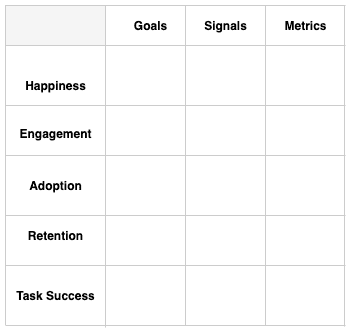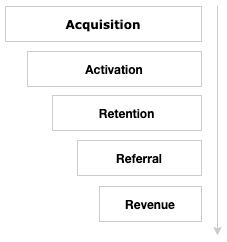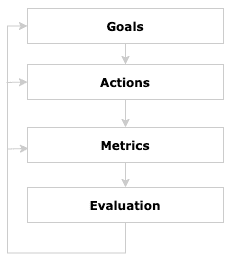Metrics - Defining Success and Measuring Results
March 01, 2020
What are Product Metrics?
Product metrics are measurements that help evaluate the success of the product by measuring and validating the the value, health, performance and growth of the product e.g. Monthly Active Users, Churn Users, NPS scores, Monthly Recurring Revenue etc.
These metrics are measured for the product overall as well as for the individual features of the product which are developed as the product grows.
This helps define success parameters for individual features which in the bigger picture add up to create a successful product.
Types of Metrics
Although types of metrics to measure may vary across products and companies, but we may generally classify them into these five categories.
-
Growth & Activation Metrics
-
New Users are the users that the product has gained who are using the product for the first time e.g. if we consider twitter then users who have signed up recently are new users. Metrics to measure new users:
- New users per {timeperiod} (week, month, quarter, year)
- New users by source
-
Activated Users are users that have interacted in a meaningful way with a given services or a given product e.g. if we consider twitter again then we may say users who have uploaded their profile picture and followed atleast 5 users are to be considered as activated users.
Again the defination of activated users may vary across products and features depending on the type of user base and type of product. Metrics to measure activated users:- Activated users per {timeperiod} (week, month, quarter, year)
-
-
Engagement Metrics
-
Engagement metrics help us understand how much value users find in the product including if users are able to understand and find value with the features inside the product or are they dropping off at a certain point. Metrics to measure engagement include:
- Session length
- Session frequency
- Time spent
- Actions count
- User flow
-
-
Retention Metrics
- Retention metrics help us understand the number of users who keep coming back over time to use the product. These are the most valuable users as they find value in the product for which they return frequently.
- Retained users are those users who are using the product regularly.
-
Resurrected users are those users who were dormant but we got them back to using the product by some means like notification, feature update etc.
- Retention rate
- Resurrected rate
- User churn rate
-
User Happiness
- User happiness is measured by how easy is your product for users to do what they’re trying to do without being forced to do unnecessary steps in order to complete a simple task.
-
It can be measured using metrics such as
- NPS scores
- Churn
- Customer Satisfaction Score (CSAT)
- Customer Effort Score (CES)
- Number of complaints per customer
-
Revenue Metrics
- Revenue Metrics help us understand how much revenue are we making with different products and from different users/customers over a period of time.
-
It can be measured with metrics such as:
- Customer Acquisition Cost (CAC)
- Monthly recurring revenue (MRR)
- Annual recurring revenue (ARR)
- Revenue per customer
How to Pick Good Metrics?
- Understandable: Good metrics are easy to understand and act on.
- Rate or Ratio: Always prefer a rate or a ratio which is easy to track.
- Correlation: They can be a relationship between two or more connected things.
- Changeable: They should change with time to validate success or faliure.
Metric Framworks
-
Google’s HEART Framework
This framework focuses on the quality of user experience and track goals, signals and metrics of your product or project to determine progress. The HEART metric covers Happiness, Engagement, Adoption, Retention and Task Success metrics divided across Gloals, Signals and Metrics:

Read more about the HEART Framework and how to use in the original article written by Kerry Rodden . -
AARRR Framework
This framework focuses on measuring and optimizing every phase of customer funnel by optimizing it through focus on one metric at a time. This framework is also called startup metrics for pirates as the acronym AARRR makes you sound like a pirate.

Read more about the AARRR framework. -
GAME Framework
The GAME framework is a 4-step process that can define metrics for any feature or product using Goals, Actions, Metrics & Evaluations.

Read more about the GAME Framework.
Tools to Measure Metrics
- Google Analytics
- Crazy eggs
- Mixpanel
- NPS tools
- Optimizaly
Therefore defining the right product success metrics are essential for the growth of the product. Measuring them and acting upon them regularly will help the product scale, grow and adapt to the user’s requirements.
